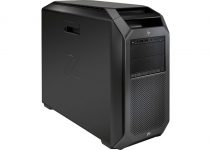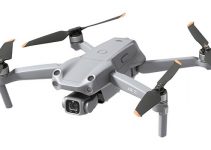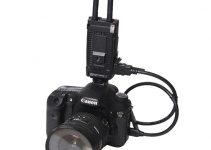You might have thought they were down for the count, but Apple is back in the game in a big way with the newly released, all-Apple M1 chip that is making everyone’s jaws hit the floor with its super-fast processing power in the 13” MacBook Pro, 13” MacBook Air, and Mac Mini.
As we all know by now, it promises speeds that are equivalent to the highest spec’d MacBook Pros and iMacs in a system without a dedicated graphics card and significantly less RAM.
Are all of the good things we’re hearing about Apple’s new breakthrough true, or is it just a bunch of hot air from the marketing department. MonkeyPixels puts the M1 MacBook Air to the test to see if it can handle real-world editing of Canon Raw files.
As an editor, the biggest question on my mind is pretty simple: Will I ever be able to go outside again? SSDs have gotten smaller, wireless connections are faster than they’ve ever been, and laptops are finally getting to the point where we might be able to completely cut the cord and take our systems on the go.
There are a lot of power-hungry systems that can do this already, but those are Windows systems. If you’re strictly a Mac user, like me, the M1 might just be what you’re waiting for!
That’s exactly what our friends at MonkeyPixels in Vienna were hoping for when they purchased the Apple MacBook Air M1.
They wanted a system that could compete with their iMac that they could edit with on-the-go, but it seems the M1 wasn’t everything they were promised by other reviewers online.
Compatibility
The first thing to note is that the new Apple M1 chip is NOT compatible with all of your existing software and plug-ins, at least not yet. While Final Cut Pro might work just fine, if you rely on plug-ins as an essential part of your workflow you’re pretty much out of luck for the time being.
Software makers are working tirelessly to update their programs for the new processor, but these things take time. These could be a non-starter for a lot of people.
Playback Speed
Can the M1 MacBook Air playback non-transcoded footage without any lagging? The answer is yes, and no.
Right off the bat, it seems as the the XFAVC footage from the C300III, which is a pretty complex codec, will play absolutely smoothly, but after 20-30 seconds of playing clips and moving shots around on the timeline the playback starts to stutter and lag.
You could certainly edit on this machine, but unfortunately, real world use cases aren’t proving to be as much as we were promised.
This is likely due to the M1 MacBook Air’s lack of a fan. After the processor starts to heat up, the speed is throttled to help control the temperature.
But playback issues aren’t always the case, and it seems that (just like the iPad Pro) playing back 10-Bit H.265 footage from the Canon R5 can be done with absolutely no issues whatsoever.
Speed ramping, reverse, and editing is buttery smooth and fast – that’s something even the high-end MacPro desktop systems can’t do.
And this isn’t just for highly compressed stuff either, after installing the Canon Raw Light plug-in into FCPx, playing back footage with a LUT and some minor corrections worked well too. CRM files from the C300III and C200 playback very smoothly with very few dropped frames on the lowest spec’d M1 MacBook Air!
Transcoding
It’s always best to transcode your footage into a codec that isn’t going to tax your system’s resources, and with the introduction of the Canon EOS R5 it’s been a necessity since no computers could reliably playback the footage. But even those transcoding times were astonishingly long, on the most robust system too. The M1 pretty much cuts that time in half.
Running a transcode on the same 180GBs of R5 footage, it took MonkeyPixels’ iMac 77 minutes to transcode the content but the M1 MacBook Air had completed the task in just 44 minutes.
Conclusion
Just a few months ago, an Apple MacBook Air wouldn’t even have been considered as a machine that could edit video and now this $999 mini computer can stand with some of the best of them. If you’re editing footage that is mainly shot using an H.265 10-Bit codec, an M1 system is a must-have.
If you’re looking for something compact, affordable, and still extremely powerful, an M1 is a must-have. But if you need a system that runs with all the conveniences of a fully-loaded system with all the bells and whistles, the MacBook Air just isn’t there yet.
It is only a matter of time before Apple releases a MacBook Pro 16, iMac Pro, or MacPro with a version of the M1 chip inside of it, and when they do Apple will have left every other computer manufacturer in the dust.
[source: MonkeyPixels]
B&H Order Link:
Apple 13.3″ MacBook Air M1 Chip with Retina Display (Late 2020, Space Gray)
Disclaimer: As an Amazon Associate partner and participant in B&H and Adorama Affiliate programmes, we earn a small comission from each purchase made through the affiliate links listed above at no additional cost to you.




